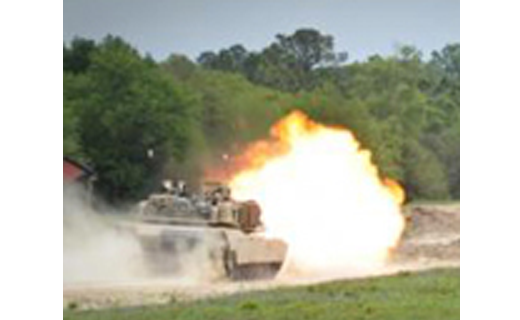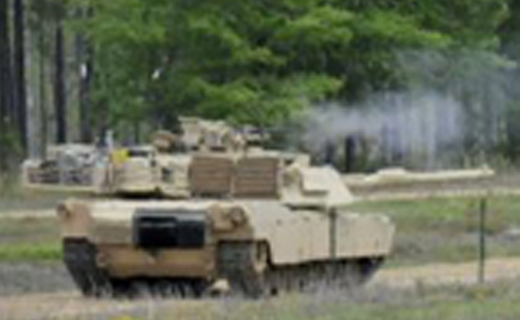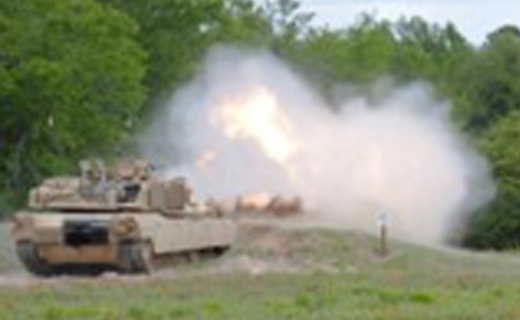From the Boresight Line associated article:
M256, 120mm Abrams Main Gun Flareout



Almost daily, Soldiers and Marines are conducting live-fire training with the Abrams main battle tank. This training includes use of the 120mm M256 main gun system. It is critical that this system perform as designed to maximize training and ensure safety of the crew.
Several tank crews have recently experienced a little-known event called a flareout. A flareout occurs shortly after a main gun is fired. Essentially, it is a secondary flame/flare seen outside the muzzle of the main gun after the large initial blast (flame/fire) dissipates. The photos show a flareout.
A flareout takes place outside the gun and is not seen as a safety issue. However, the concern is that this event could be a prelude to a flareback, which can be hazardous to a crew inside a tank turret. A flareback is detailed in Training Manual (TM) 9-2350-264-20 and is described as occurring when fuel-rich gases formed by the normal burning of propellant enter the crew compartment, mix with oxygen and are ignited by some source. These gases are a normal byproduct of firing, and the function of the bore evacuator is to push them out the muzzle rather than allow them to drift back into the turret.
No firm cause for a flareout has been yet determined. Training and Doctrine Command (TRADOC) Capability Manager-Armored Brigade Combat Team (TCM-ABCT); Armament Research, Development and Engineering Center (ARDEC), Watervliet Arsenal, NY; project manager (PM), Maneuver Ammunition Systems (MAS), Picatinny Arsenal, NJ; and other technical organizations continue efforts to determine a cause for a flareout as well as corrective actions for a tank crew/unit to take should a flareout occur.
As efforts continue toward resolution of this issue, a crew/unit checklist has been developed for use when a flareout occurs. In the event of a flareout, the tank crew should immediately cease fire and use the checklist to gather critical information about the event. If a fault is found, this fault must be corrected before main-gun live fire of the tank can continue. If no fault is found, the unit commander will decide when to place the tank back into a live-fire mode. The unit should continue to monitor the performance of this tank to ensure no further issues develop.
It is important that this crew checklist be accurately filled out and sent to the listed points of contact as soon as possible. This information will be a key part of identifying causes, concerns and proper corrective action to prevent a flareout event.
 email
email print
print